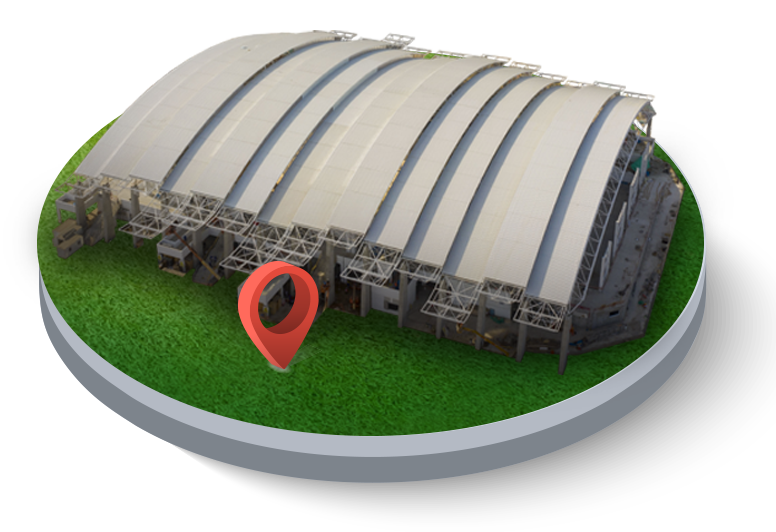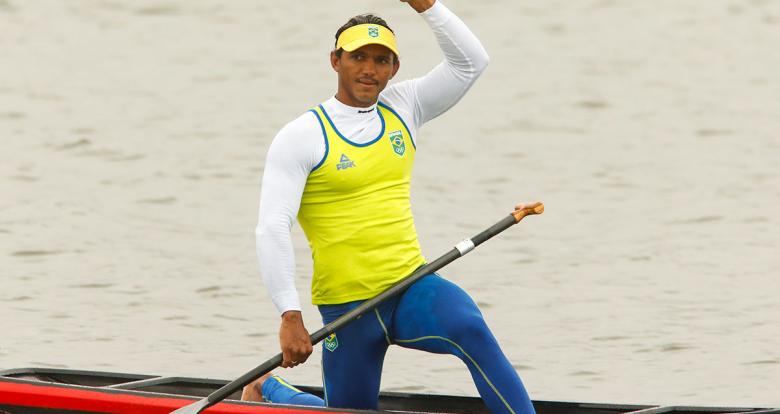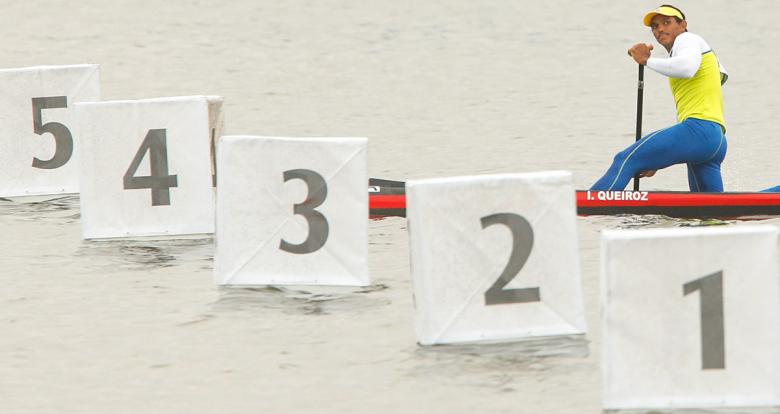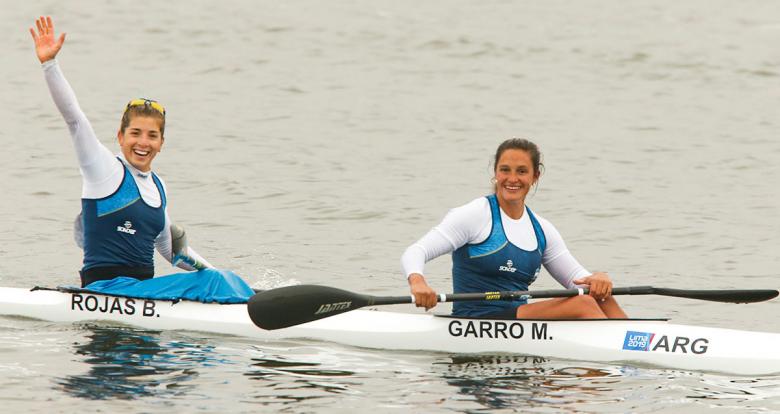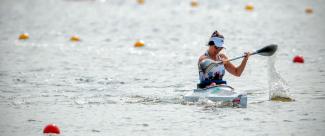
Canoe Sprint
|
MALE EVENTS
|
FEMALE EVENTS
|
|---|---|
| K1 200m | K1 200m |
| K1 1000m | K1 500m |
| K2 1000m | K2 500m |
| K4 500m | K4 400m |
| C1 1000m | C1 200m |
| C2 1000m | C2 500m |
|
MALE EVENTS
|
|---|
| K1 200m |
| K1 1000m |
| K2 1000m |
| K4 500m |
| C1 1000m |
| C2 1000m |
|
FEMALE EVENTS
|
| K1 200m |
| K1 500m |
| K2 500m |
| K4 400m |
| C1 200m |
| C2 500m |
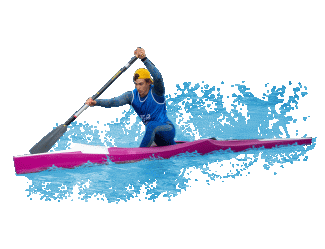
In Canoe singles (C1) and Canoe doubles (C2), athletes paddle on only one side of the canoe. When paddling in C1, they must use a steering “J” stroke to keep the boat straight. The kayak athletes row on both sides, since their boat has a rudder for steering, which is connected by cables to a steering control manipulated by the athlete’s feet. In these races, paddlers are in a striding position. The event takes place on a flatwater course, with three different distances: 200, 500 and 1000 meters. The winner is the first who crosses the finish line. The Lima 2019 Pan American venue for this sport was north of the city in Albufera de Medio Mundo.
Keywords
Blade: The wide and flat part of the paddle.
Bow: The front end of the boat.
Chute: An area where the course becomes constricted, resulting in a narrow tongue of water.
Stern: The back end of the boat.
C2: A canoe with two paddlers.
C4: A canoe with four paddlers.
K2: A kayak with two paddlers.
K4: A kayak with four paddlers.
It is one of the most intense sports of the Games. Race distances: 200, 500 and 1,000 meters, where rowers test all their strength and intensity to glide over calm waters. Canoe sprint is part of the Summer Olympic Games from Berlin 1936 (male) and London 1948 (female) and was included in the Pan American Games since Indianapolis 1987 (male and female).

Images
